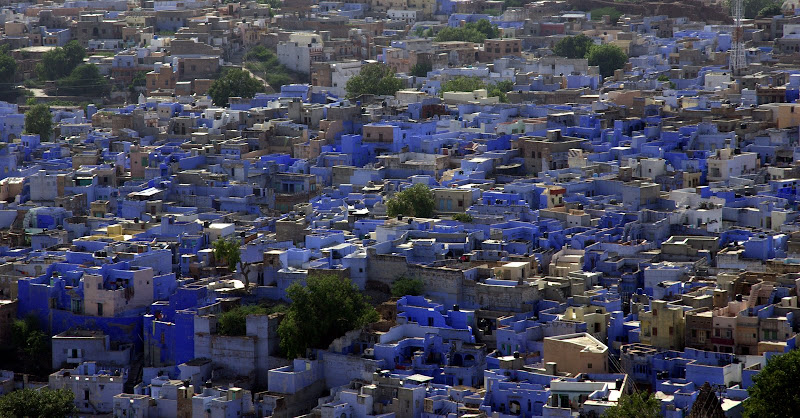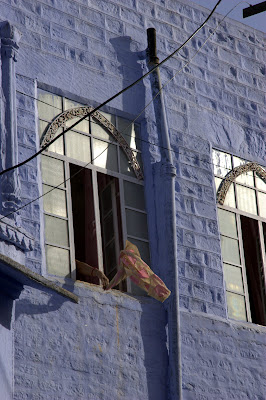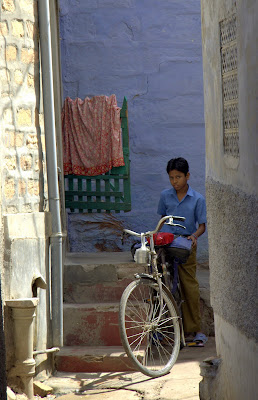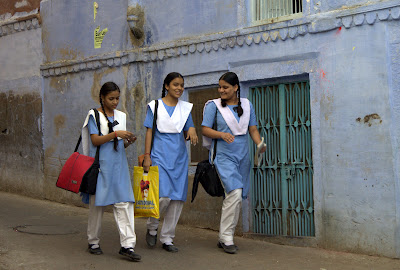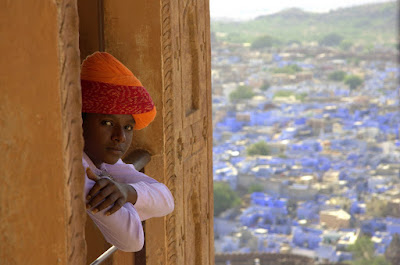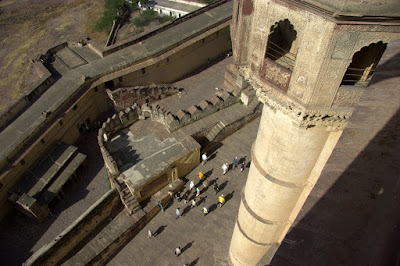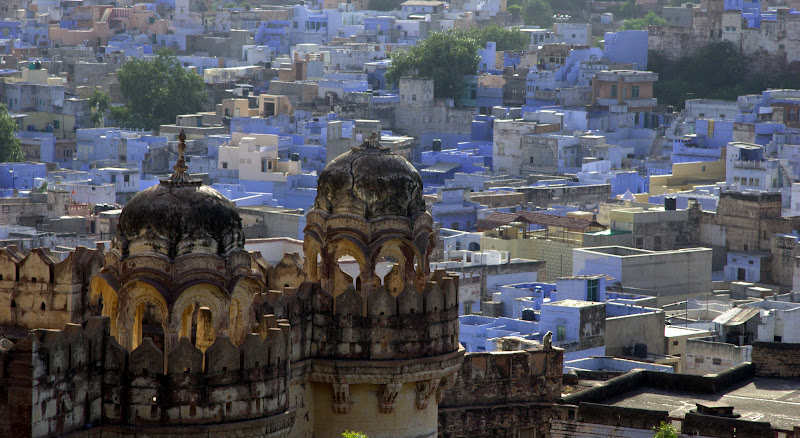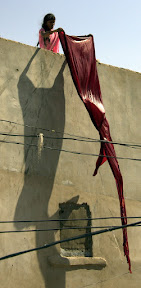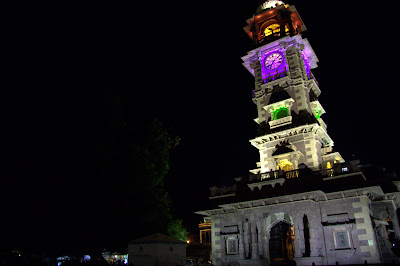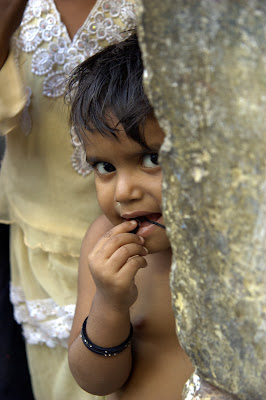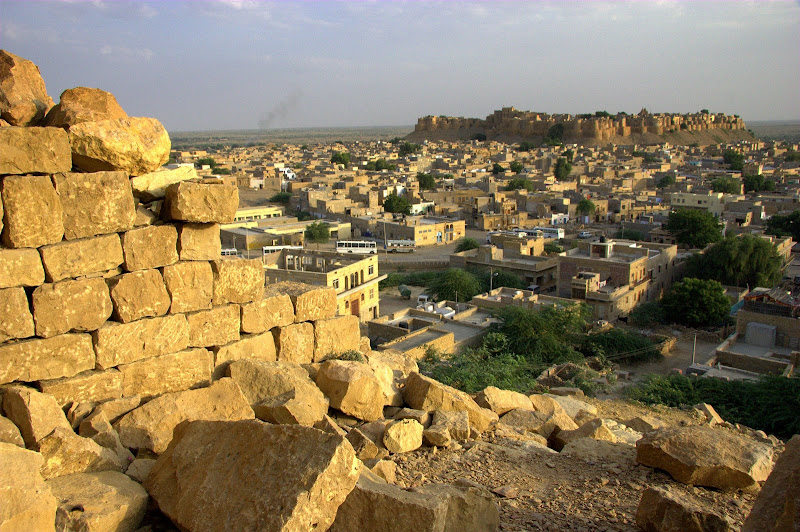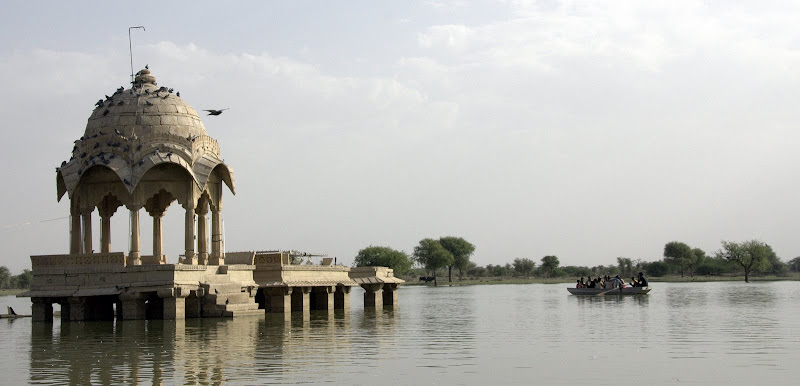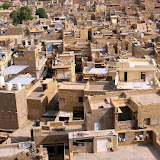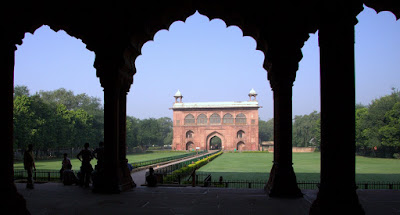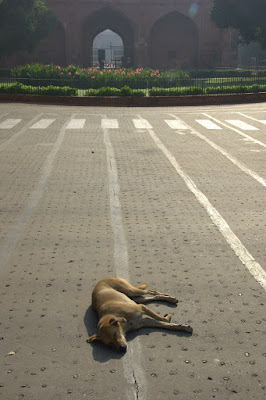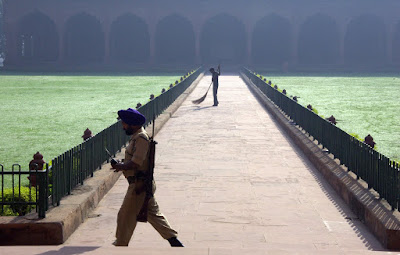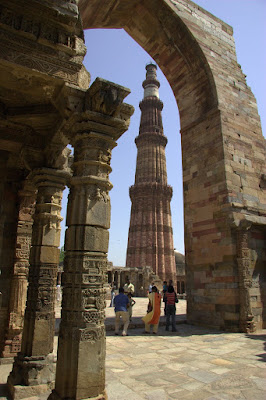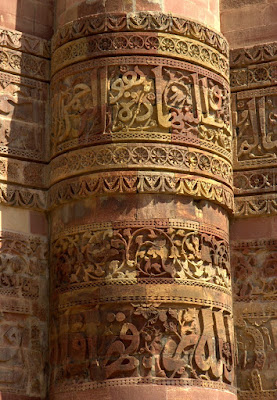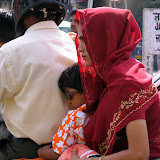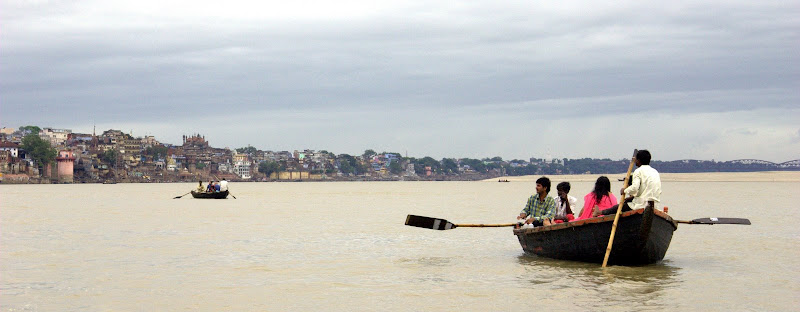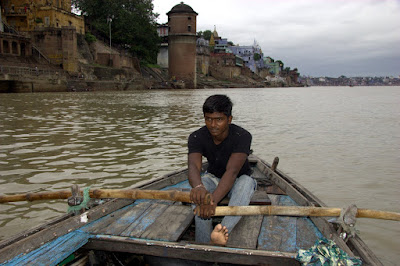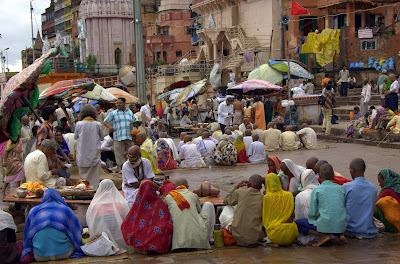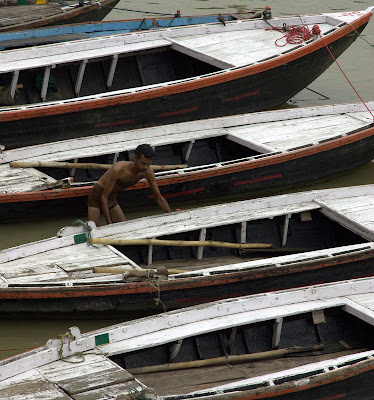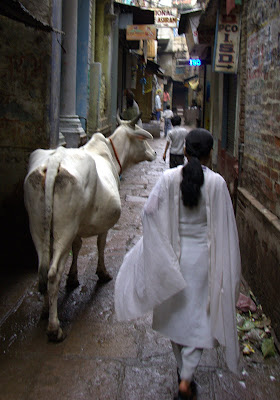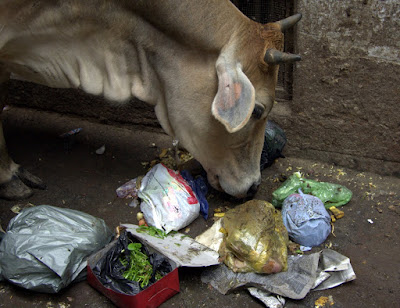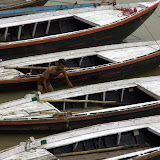 Jaisalmer, India
Jaisalmer, India - Most tourists make Agra a day trip from Delhi in order to see India's most famous site, the Taj Mahal. We had read however, that Agra deserves more than that, having been the center of a century of architectural one-upmanship during the Mughal empire. We decided to give it two days. In the end however, I didn't see much more of it than your average in-and-out tourist.
The train from Varanasi was running late as usual. We arrived at the station just in time see that the train was going to be 1 1/2 hours late. Two and a half hours later it showed up, and 1/2 hour after that we were on our way. I asked the ticket man when he thought we would arrived in Agra. He told me that since the train was 2 hours late, we should arrive at 10:00 pm. In a strange sort of way I kind of believed him. First off, we were running 3 hours behind not 2 and 10pm would put us into Agra only 4 hours later than scheduled. That sounded about right. I spent the evening trying to stay awake so that we did not miss the station. I passed the time by reading a very good book, killing the 30 or so cockroaches that chose to invade my bunk, and tried to ignore the man in the bunk next to me. He had some serious gas and was not in the least shy about sharing.
It was 12:30am by the time we arrived in Agra, over 6 hours late. By 1:00 am we had made it to our hotel and spent 30 more minutes trying to wake the caretaker so that he could tell us he had already given our room away. At 1:45am we looked at a room in another hotel that was completely taken over by bugs. As we left the caretaker was shouting to us "300 rupee...I spray pesticide!" At 2am we found a room. I made a mad dash to the loo, as something I had eaten on the train did not agree with me. Shower and bed followed shortly afterwards.
So, it was Thursday, Sept 27th when we woke up late in Agra. I had a serious belly ache and the rest of my body was degrading fast. My skin hurt. Over breakfast we read that the Taj Mahal was closed on Fridays, so we decided to set out after lunch and check it out. When we first arrived the light was horrible. There was a thick, washed out cloud cover above and the building was almost completely in shadow. Not the best for photos. Even so, it was definitely one awe-inspiring piece of architecture. The guidebooks like to talk about it being the most impressive monument ever built for love.
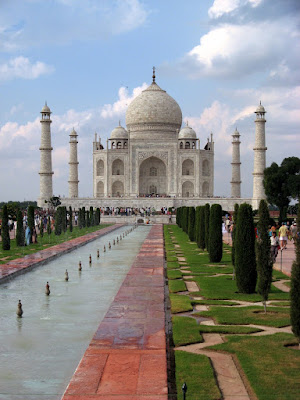
The Taj Mahal is actually a mausoleum built by Emperor Shah Jahan for his second wife who died giving birth to their 14th child in 1631. It took over 20,000 people and 22 years to complete. I, however, was having a hard time taking all this in, as my head was pounding and I felt extremely dizzy. I seemed to be concentrating more on the fact that there was only one toilet at the Taj Mahal and it was a long way from the structure itself.

Because we were moving slow and I needed a lot of time to sit, rest and collect my head, we ended up spending the entire afternoon and a good portion of the evening there. We watched as the clouds parted and the sun hit building in its full glory. We watched the color of the marble change as the sun dropped. We watched as thousand of foreign and local tourist mulled about watching the same thing. The Taj Mahal is one of those places that is photographed constantly by thousands of tourist everyday. Everyone who visits must knock off at least a roll of film if they are still using film. As the afternoon rolled on, I think we both enjoyed the challenge taking pictures that were perhaps mildly different than what you see in the post cards.

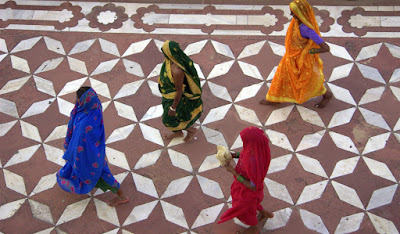
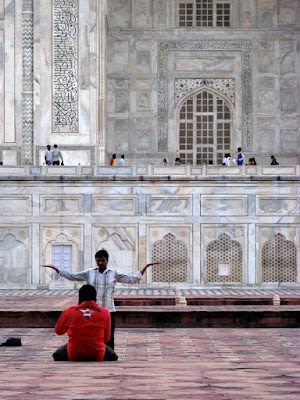
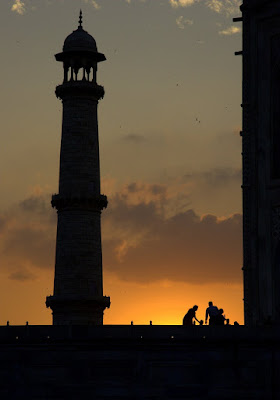

The next day however, I was a goner. Instead of venturing out and seeing the other architectural wonders of Agra, I spent the day lying in bed and cursing the rogue samosa or whatever it was that made me feel like there was an elephant sitting on me. Suwei went out to visit Agra Fort and get some lunch, and maybe she might like to tell you a bit more about Agra. As for me, beyond saying that the Taj Mahal rocks, the most I could tell you about Agra was the color of the ceiling in our hotel room. That night we caught the Taj Express to New Delhi.
This is Suwei. I am stateside in California now. Actually, been sick for the last few days with a really bad case of food poisoning. Didn't actually get sick until 12 hours after I landed so I can only blame airplane food, this really good Mexican place that Eng-Shien and I had lunch, or my own cooking for dinner. Anyways, the fever has passed but least to say I am still far from solid. Yes, I know, WTMI.
Ok, so Agra...just wanted to say one thing really quick...the Taj Mahal was incredible! And for me to say that at the end of a 6-month trip...it is really, really incredible. Blew the Forbidden Palace away (though I have to put in the caveat that most of the Forbidden Palace was hidden by scaffolding for renovations when we visited). Plus, all the other tourists in beautiful bright saris enhanced the scenery instead of loud Chinese tourists with identical shirts and hats detracting from it.
So the next day, Karl was sick...though he did say that he would wait until 10am to see if he felt better and make the decision then as to whether he would venture out. So by the time I reached Agra Fort it was around 10:30am and hot. No clouds in the sky. The fort was nice. Yes, just nice. I guess after being blown away by the Taj Mahal the day before, Agra Fort paled in comparison. If you plan to go to Agra some day, I say do the fort first then the Taj. It is well restored and maintained and has a lot of history. I spent about 1.5 hours there and had walked leisurely through all the parts open to the public, even the parts that have not been restored. (where I got yelled at and told to be careful to not fall off the edge of the wall). The pics from the outing were not great since I was there during the middle of the day. Actually, the fort, or at least the portion that we were allowed in, is less a fort and more a set of palaces and courtyards. One of these palaces is where Emperor Shah Jahan who built the Taj was imprisoned by his son Aurangzeb (2nd son from the wife for whom he built the Taj Mahal) when Aurangzeb took over and from that palace you can see the Taj! Anyways, if you want to see pics from that check the slideshow below.
Other than that, I had a bit of adventure with the rickshaw drivers but actually nothing uncommon apparently in India. I had said Agra Fort as my destination, negotiated the price, and then was promptly taken to Agra Fort Train Station. I was told that if I wanted to be taken to Agra Fort, I would have to pay more money since it was apparently my fault that I had said Agra Fort and not "Agra Fort" Fort. (Karl had said he liked India because they speak English and it was easier to communicate - you think?) I told the driver, "fine", take me to "Agra Fort" Fort. When we got there though, I pulled a bitch-move and just paid him what we agreed upon, walked out of the autorickshaw with him and his friend following me to the entrance and screaming that I had cheated him. Yes, two can play at that game. This was actually on the way back to the fort after lunch. Before this, going from the fort to my chosen lunch place, another rickshaw driver kept trying to get me to eat at
his chosen place where he would get a kickback. And then when going back to the hotel after the day's outing, yet another driver kept trying to lure me into a shop...it was a parley in English that ended with "Do you always harrass your customers? I am not harrassing you, just asking nicely. Ok, than ask. Do you want to look in a shop for just 10 minutes. NO, absolutely NO. I want to go straight back to the hotel. Is that answer confusing? Anymore nice questions?"
In all these incidents, in the beginning before all the shenanigans, I was planning to tip them but by the end of the ride, I was feeling far from generous and closer to hella-frustrated. I wonder where they get the idea that this technique works in extracting more money. On the other hand, I have heard a lot of tourists are too polite, scared, and/or dumb.
Ok by now you know the routine...more, pics, link, below:
 Huldenberg, Belgium: The next stop on my Rajasthani, tri-colored tour was blue. Jodhpur is known as The Blue City. Traditionally blue signified the home of a Brahmin, a member of the priest or scholar caste. But it seems to have caught on. It is thought that the blue keeps the home cool and helps repel insects.
Huldenberg, Belgium: The next stop on my Rajasthani, tri-colored tour was blue. Jodhpur is known as The Blue City. Traditionally blue signified the home of a Brahmin, a member of the priest or scholar caste. But it seems to have caught on. It is thought that the blue keeps the home cool and helps repel insects.
